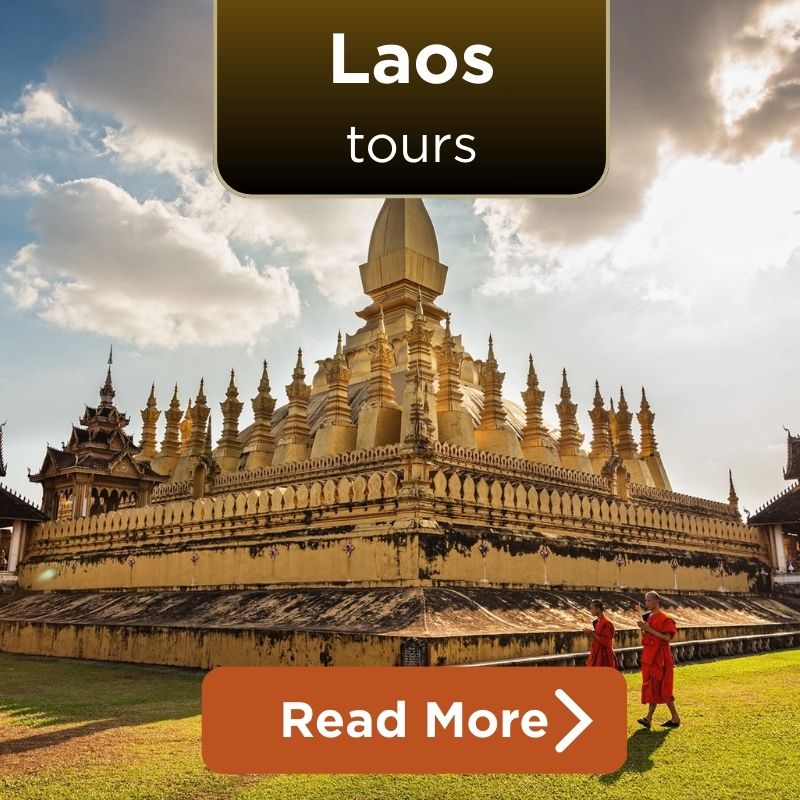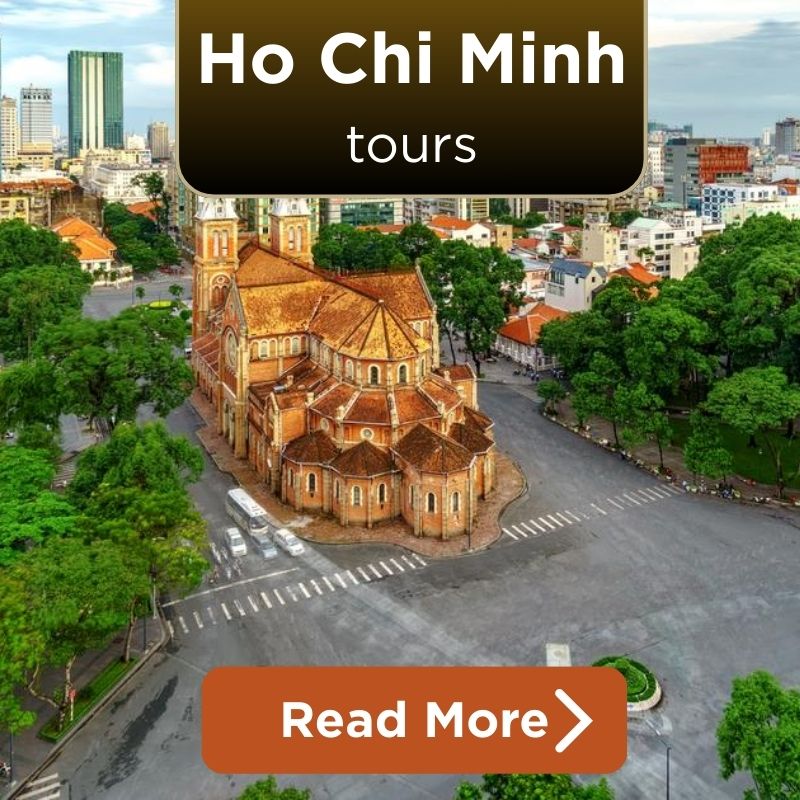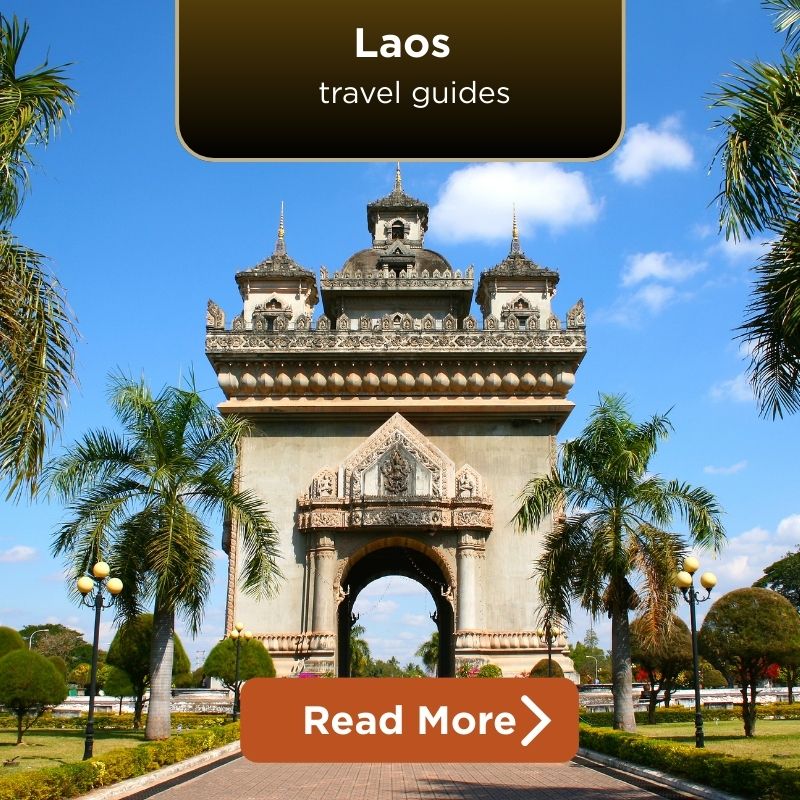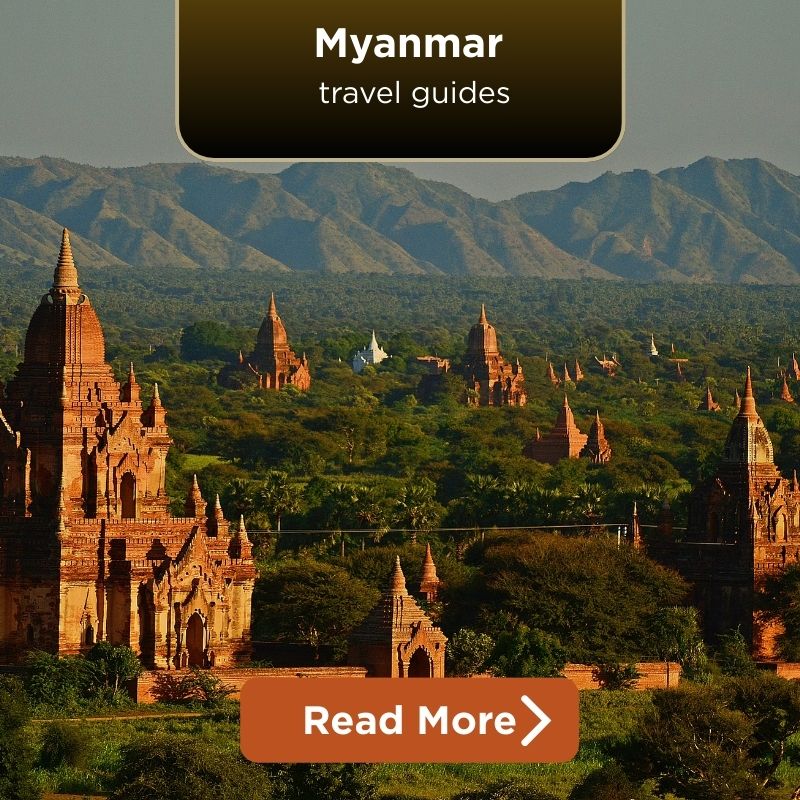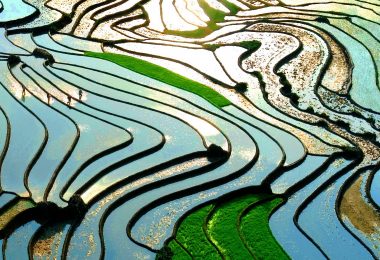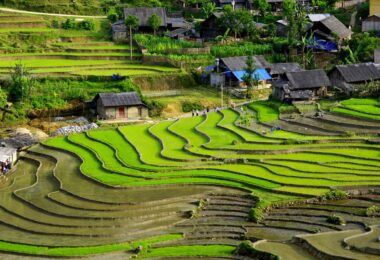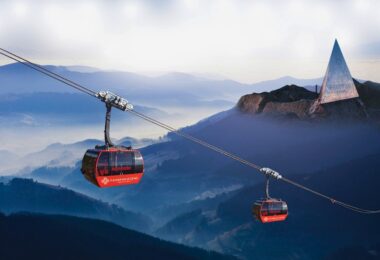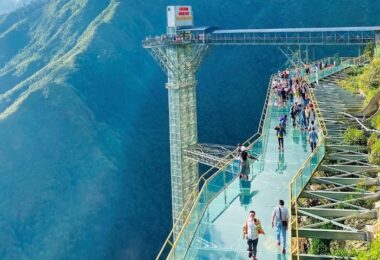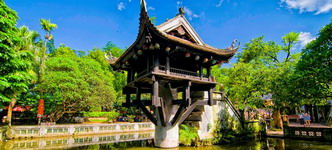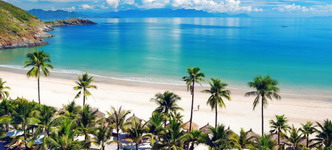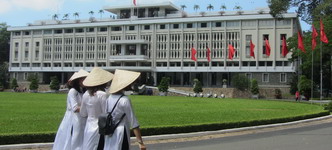Quick Overview: What You Need to Know About Sapa’s Seasons
Sitting high up in the northern hills, Sapa town provides a four-seasons-in-one-day experience. Choosing the best time to visit Sapa is extremely important! With its high altitude, Sapa temperature remains cool throughout the year, ranging from 10°C to 25°C. If you’re trekking through May’s green rice terraces or experiencing Sapa in December, dreams of frost, and having an understanding of when to travel, define your entire trip. Are you dreaming of trekking through golden rice fields or immersing yourself in the beauty of ethnic minority villages? Then, timing your trip to Sapa correctly matters!
Sapa weather breaks into a dry season (October-April) and a wet season (May-September), both of which have a different kind of magic to behold. For the clearest skies and most impressive vistas of Fansipan Mountain, best time to visit Sapa is from March to May or September to October. If you’re taking a trekking tour, exploring a cultural odyssey through Ta Van Village, or discovering Sapa winter, knowing the best time to visit Sapa makes your experience truly unforgettable. So, let’s break each season down further to discover what Sapa offers!
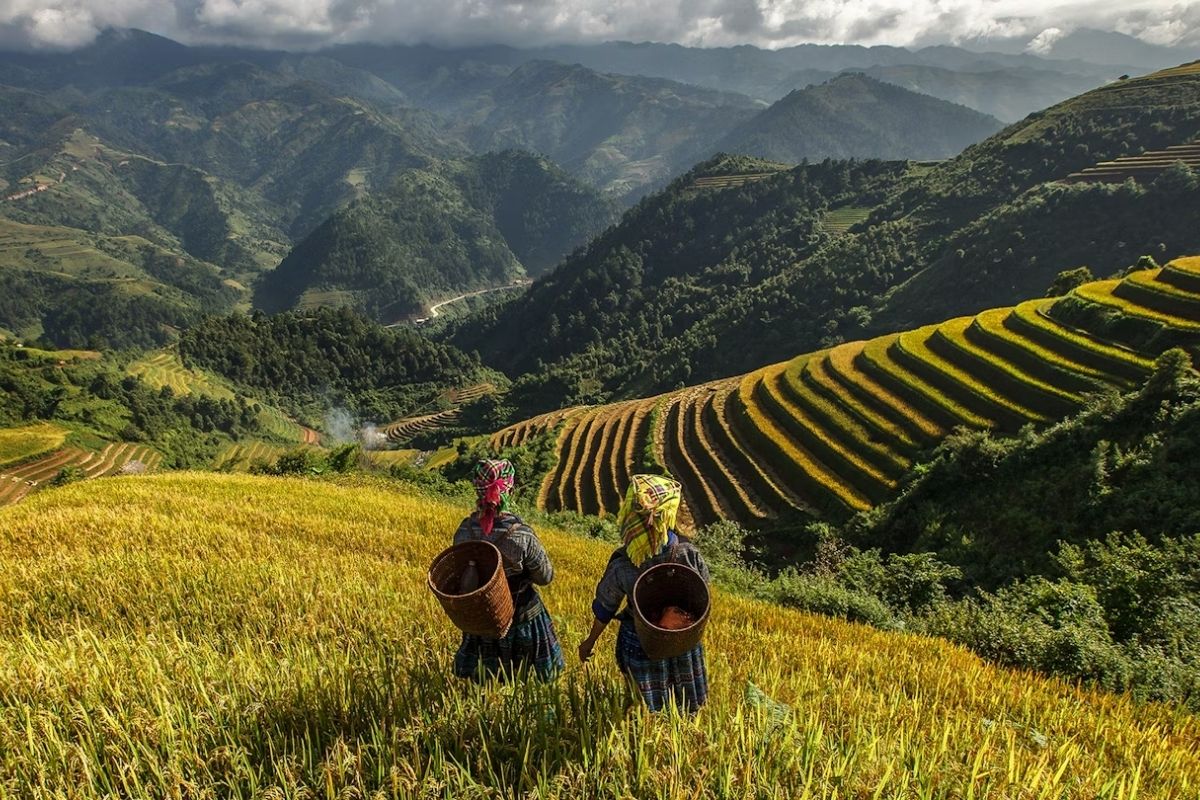
Sapa’s Seasons (Source: lonelyplanet)
Spring in Sapa (March – May): Perfect for Beginners and Bloom Lovers
Sapa’s Spring Weather: Mild and Refreshing
Spring Sapa weather is a dream come true. Sapa temperature is between 15°C to 20°C, and light, mild showers during spring bring freshness to the valleys without interfering with your schedule. The clear sky and cool breeze make spring an best time to visit Sapa if you are a trekker or photography enthusiast!
Top Activities to Enjoy
- Trekking at Muong Hoa Valley: Situated close to Lao Chai Village, Ta Van Village, Muong Hoa Valley (5km south from Sapa town center) comes alive in spring. It’s a misty mountain paradise of green rice terraces where you can trek effortlessly in gentle sunshine.
- Conquer Fansipan Mountain: Fansipan, also known as the “Roof of Indochina" at 3,147 meters, can be found in San Sa Ho Commune, Sapa Town, Lao Cai Province. Fansipan in spring has enchanting weather and flower-filled landscapes, but you can also travel there by taking a ride on the Fansipan Legend Cable Car to still experience its stunning views!
- Admire the Watering Season: From March through early May, the rice fields are flooded by the farmers, making the terraced rice fields look like enormous natural mirrors reflecting the sky above. One of the most spectacular views of your trip to Sapa!
- Join Local Ethnic Festivals: It’s festival time during spring! There are many festival days at ethnic minority villages, such as those of H’Mong people and Dao people, featuring vibrant folk ceremonies. Go to Ta Van Village, 10km from Sapa town, where you can participate in celebrations, indulge in indigenous delicacies, and truly experience cultural immersion.
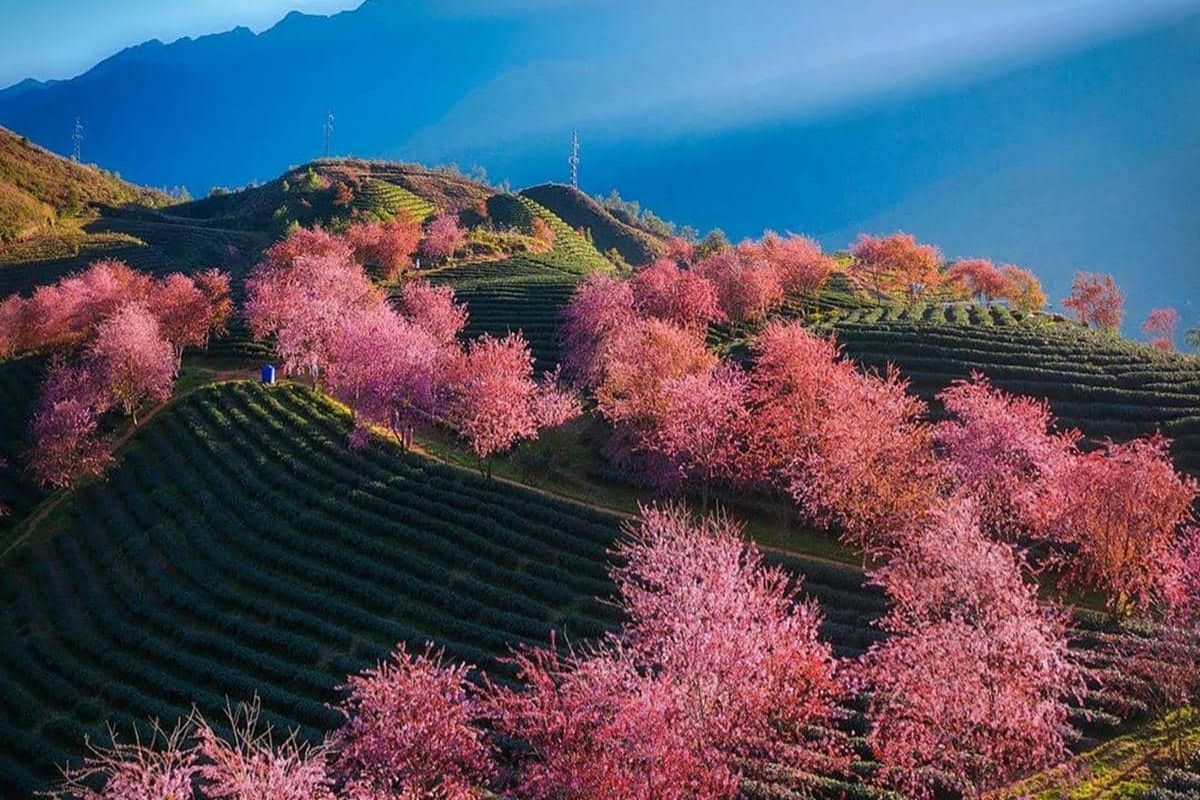
Spring in Sapa (Source: viettrekkingsapa)
Summer in Sapa (June – August): Lush Greenery and Hidden Adventures
Sapa’s Summer Weather: Wet, Wild, and Beautiful
Summer Sapa weather warms up, but only to between 17°C and 24°C. There are plenty of showers during the afternoons, but don’t be deterred! The rains awaken the hills, making this the best time to visit if you are a fan of colourful nature and enchanting misty landscapes.
Actually, if you are planning a Vietnam itinerary 3 weeks, reserving a couple of days to spend in Sapa around the summer season will ensure you have a refreshing getaway to unspoiled natural beauty.
Must-Do Adventures in Summer
Trekking Tips for the Wet Season: The paths become muddy, but if you have appropriate equipment waterproof boots, rain jackets, a positive attitude your trekking tour will remain a wonderful experience. It is advisable to hire a guide who knows where to find his way through narrow paths, particularly when trekking around villages of ethnic minorities, such as Ta Van and Lao Chai.
Waterfall Hunting: Silver Waterfall and Love Waterfall: The best moment to see the waterfalls at their best is during summer.
- Silver Waterfall (Thac Bac): Situated around 12 kilometers northwest of Sapa town on National Highway 4D, 200 meters in height, this waterfall looks stunning during wet season.
- Love Waterfall (Thac Tinh Yeu): Found farther into Hoang Lien National Park, around 14 kilometers from Sapa center, this waterfall has its fame based on its romantic legends and its green surroundings.
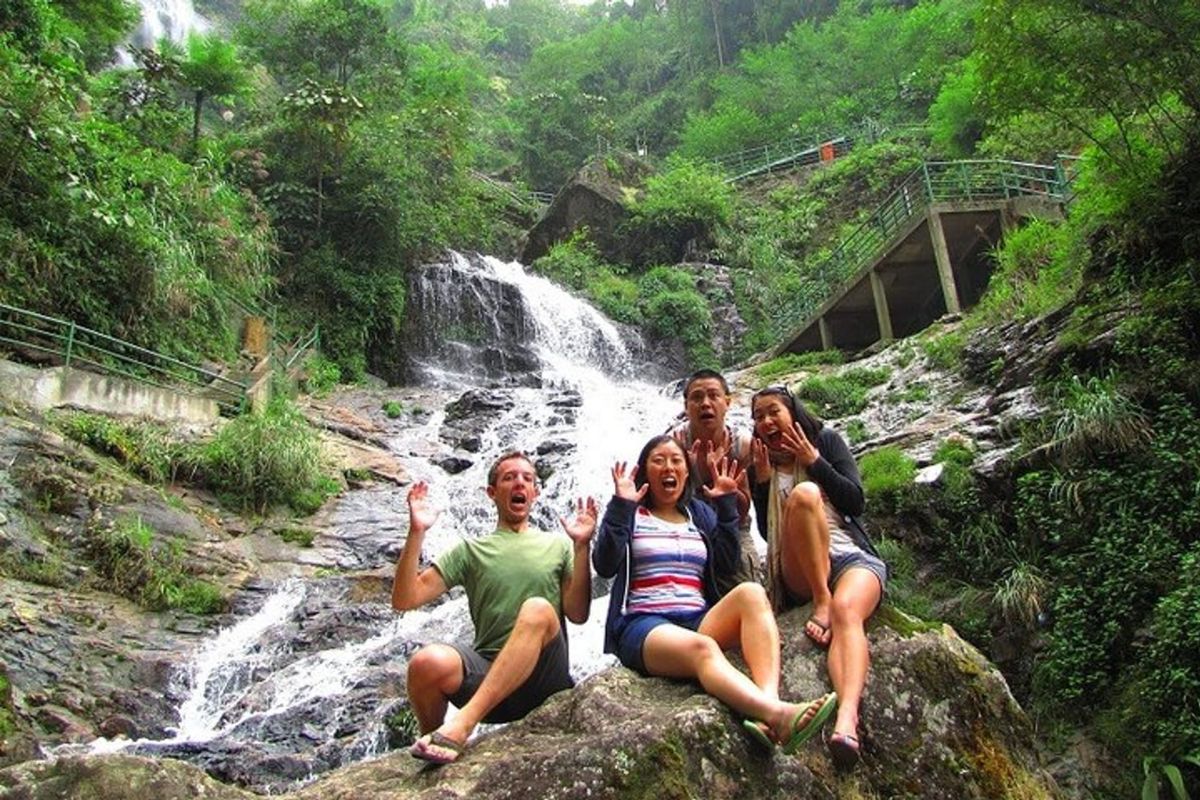
Silver Waterfall in Summer (Source: pelago)
Autumn in Sapa (September – November): Golden Season for Trekkers
What Makes Spring the Best Time to Visit Sapa?
- Perfect Weather: Pleasant, sunny days suited to hiking and exploring.
- Watering Season: The rice terraces of Muong Hoa Valley (approximately 8 kilometers southeast of downtown Sapa) reflect heaven, making stunning “water paintings."
- Blooming Festivals: Travel to Ta Van Village, a village that lies about 12 kilometers from Sapa town, to witness the joyful planting celebrations of the ethnic minority groups such as H’Mong and Red Dao.
Top Outdoor Activities You Must Try
- Trekking Fansipan Mountain: The Fansipan Mountain, also called the “Roof of Indochina” by UNESCO, has a height of 3,147 meters. You have a choice of trekking or taking a cable car from Sun World Fansipan Legend Station at 80 Nguyen Chi Thanh Street, Sapa town.
- Hiking through Muong Hoa Valley: Known for its old stone inscriptions as well as its terraced rice fields, a gentle trek along here suits beginners as well as photography enthusiasts.
- Cultural Immersion in Ta Van: Stay with a local host family, help with spring planting rituals, and partake in home-cooked, authentic meals an intimate glimpse into life in the ethnic minority villages.
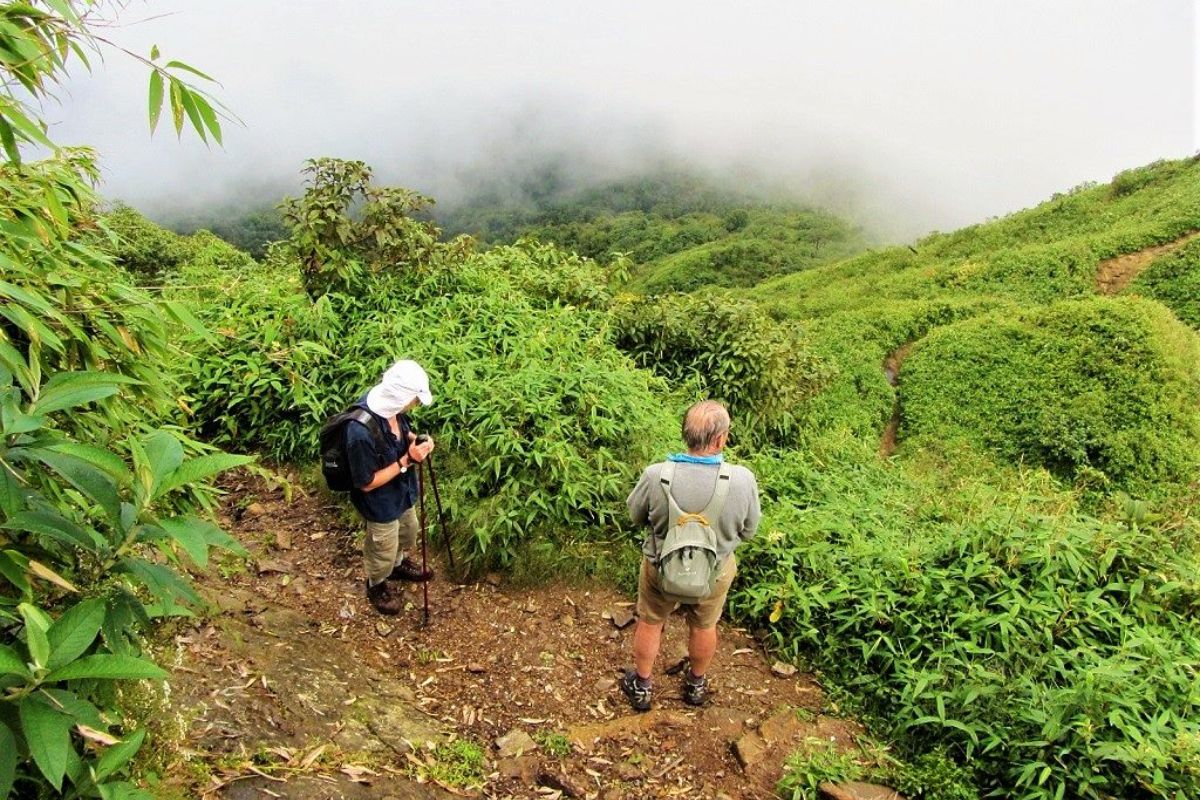
Trekking Fansipan Mountain (Source: vietnamcoracle)
Winter in Sapa (December – February): A Frosty Fairy Tale
Top Outdoor Activities You Must Try
- Snow Hunting: Travel up to Fansipan Mountain or even surrounding villages such as O Quy Ho Pass (about 15 km from Sapa town) – these are where snow first falls. Seeing rice terraced fields covered in a white frost is truly unforgettable.
- Misty Trekking Adventures: Take a trekking tour along misty trails where mist winds around you like a dream. Photography paradise!
- Peach Blossoms Amid Snow: Early spring brings a special scene, pale pink peach flowers in bloom next to snow-capped roofs of villages such as Ta Van Village. Sapa possesses an otherworldly beauty unparalleled by much of this globe.
Essential Tips for Winter Travelers
- Layer Up: Get ready for the cold by wearing thermal clothing, layering, and waterproof coats.
- Footwear: Wear strong, waterproof boots to tread upon slippery routes.
- Stay Warm in Homestays: Unlike a hotel, a homestay in Sapa town or village may not have much heating, so bring spare socks, a hat, and even a portable heating pad, if needed.
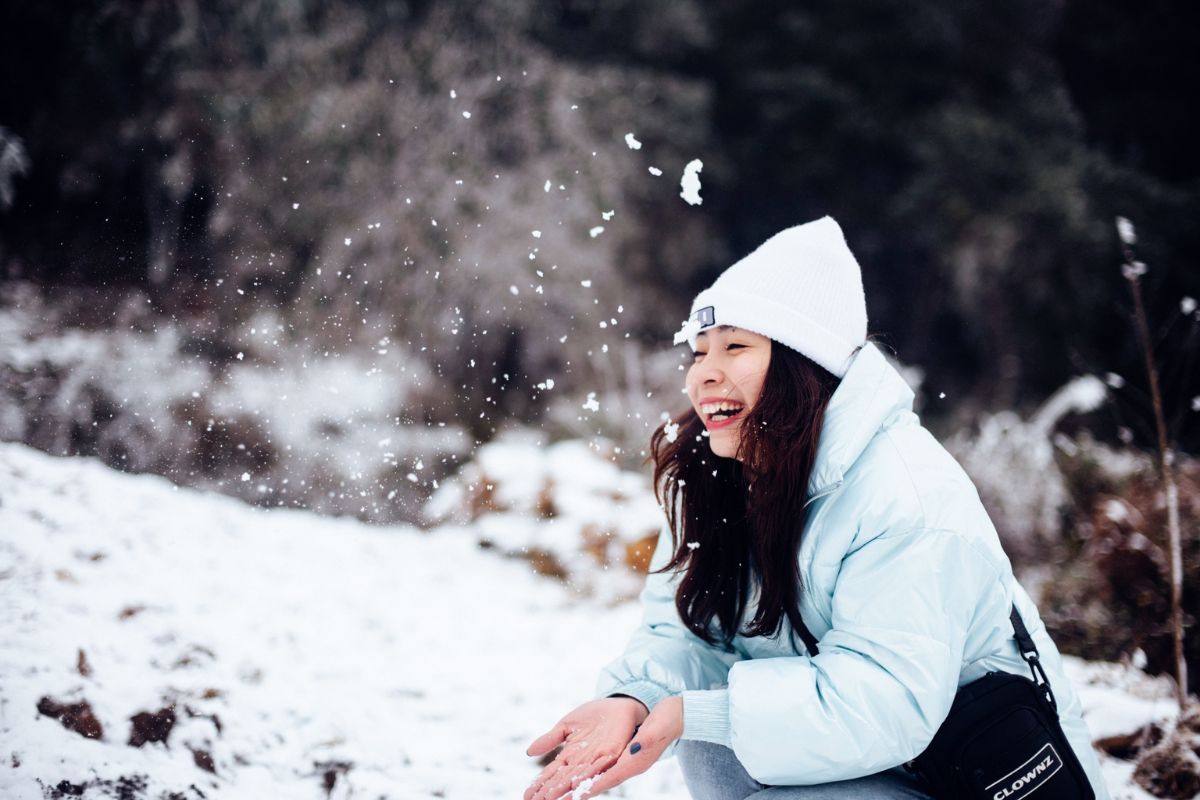
Snow Hunting (Source: tcdulichtphcm)
Best Months by Activity Type: Your Quick Adventure Guide
For Trekking Enthusiasts
March to May, as well as September to November, are ideal months to come to Sapa for trekking enthusiasts.
Throughout these months, Sapa temperature remains pleasantly cool, from 15°C to 20°C, and Sapa weather remains dry and friendly.
Imagine taking a trekking tour along Muong Hoa Valley, or to Fansipan Mountain, amidst emerald or golden scenery. The dream, isn’t it!
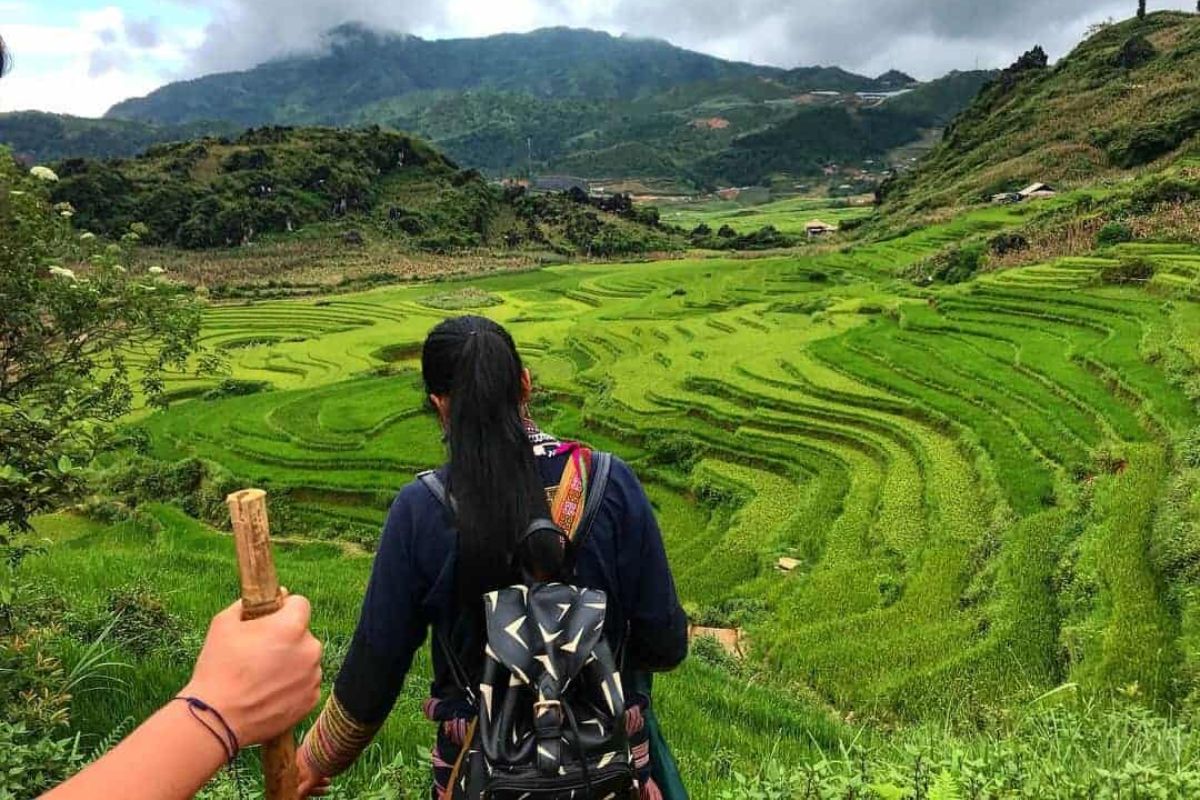
Trekking in Muong Hoa Valley (Source: mia)
For Photographers
These months, from late August to October, are photographer heaven!
The rice fields at Ta Van Village, along with ethnic minority villages, erupt into golden beauty, presenting stunning, awe-inspiring landscapes.
It’s during this window, from late in its rainy season through cool autumn, that best time to visit Vietnam Sapa if you’re seeking a postcard-perfect photography experience.

The rice fields at Ta Van Village (Source: localvietnam)
For Snow Chasers
Should you find yourself longing to catch snow in Southeast Asia, December through January will be your time!
Sapa in December sees Sapa town and the surrounding mountains glistening with frost and occasional snowfall.
Remember: Sapa winter means sub-freezing temperatures, so dress in warm clothing to savor the icy fairy tale!
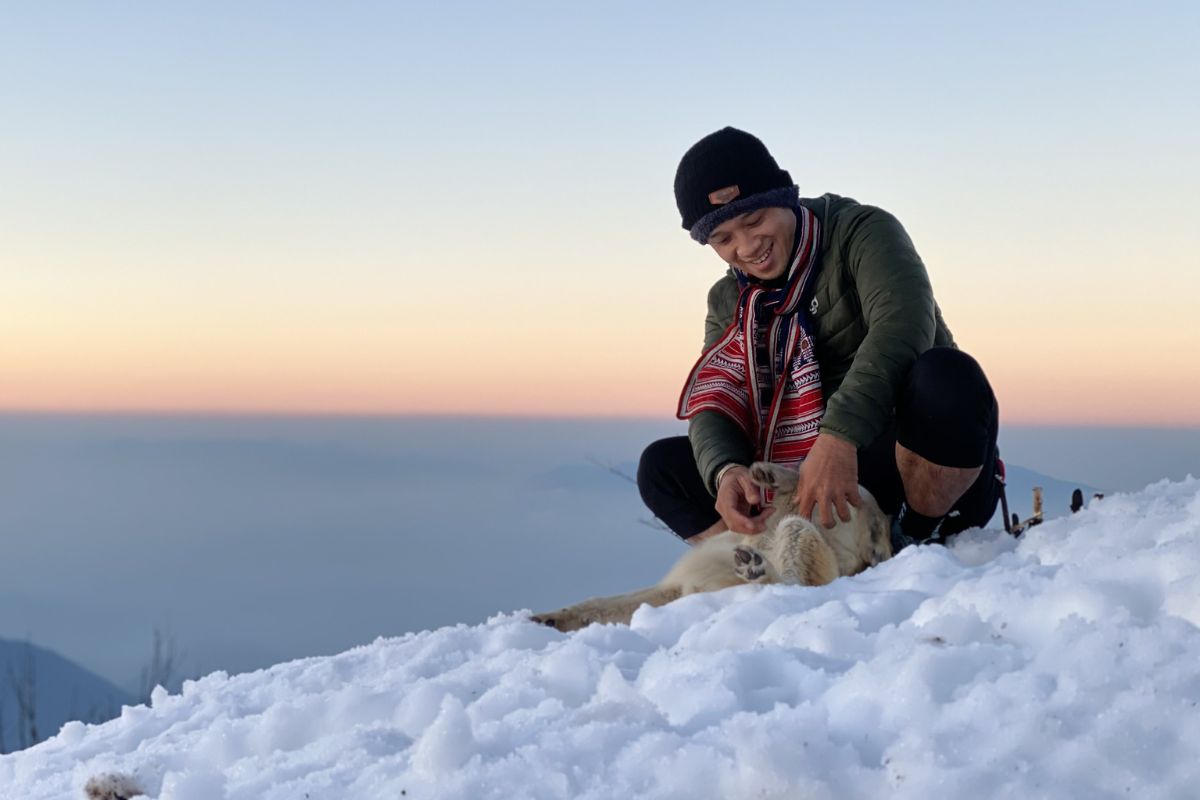
Snow Chasers (Source: thanhnien)
For Cultural Travelers
Love vibrant celebrations and true local culture? April and October are then the best best time to visit Sapa for you!
- April: Take part in joyful Spring Festivals in ethnic minority villages, dancing amidst fragrant cherry blossoms, peach flower blooms, and more!
- October: Join locals in celebrating Harvest Festivals among golden valleys and newly harvested rice terraces!
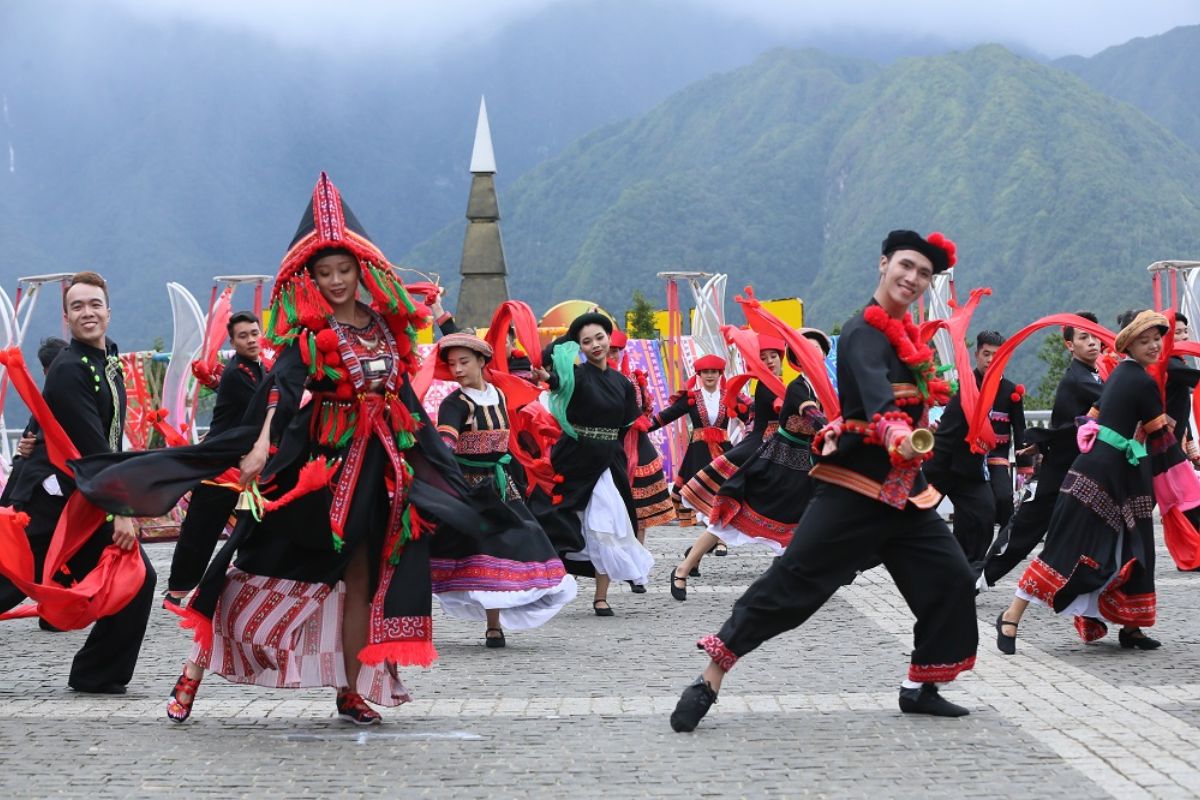
Spring Festivals in ethnic minority villages (Source: vinwonders)
Conclusion
The best best time to visit Sapa has a lot to do with your attitude towards adventure. If you are a trekking fan, then March through May and September through October have ideal weather and spectacular golden rice fields. If snow time and winter wonder are what get you, then Sapa in December through January is truly unforgettable, as Sapa winter shrouds the peaks in mystical whiteness. Whatever your fantasy, Sapa tours are all about wonderful experiences throughout the year, from cultural immersion to adventurous hikes. Take at least a three-day trip to Sapa to discover its landscapes in depth, check the Sapa temperature ahead of time, and start your adventure today to learn why travelers find every season to be the best time to visit Sapa!
FAQ About the Best Time to Visit Sapa
What is the best month to visit Sapa?
The optimal time to travel to Sapa is from March to May, as well as from September to October, when spring weather dominates, being cool, dry, and when rice terraces are most attractive.
What is the coldest month in Sapa?
January tends to be Sapa’s coldest month, when temperatures frequently fall below 5°C, and even frost or light snow is possible.
How many days do you need for Sapa?
You should spend at least 3 to 4 days in Sapa to maximize trekking, discovering native villages, and unwinding amidst breathtaking mountain backdrops.
Is Sapa worth visiting in winter?
Yes, Sapa in winter is worth a visit if you wish to witness misty views, chances of snowfall, and Sapa’s icy mountain enchantment.







